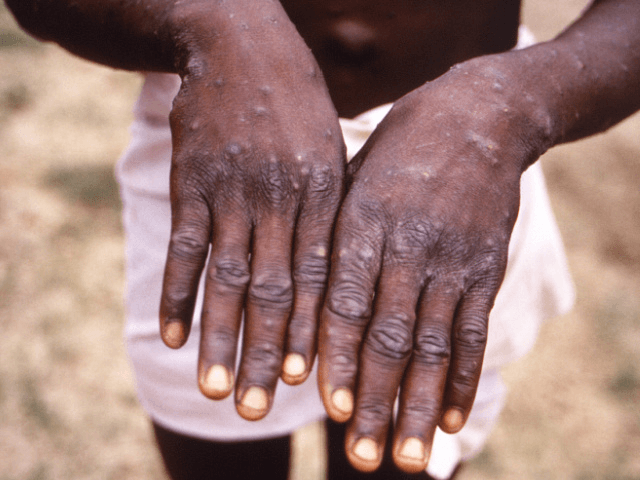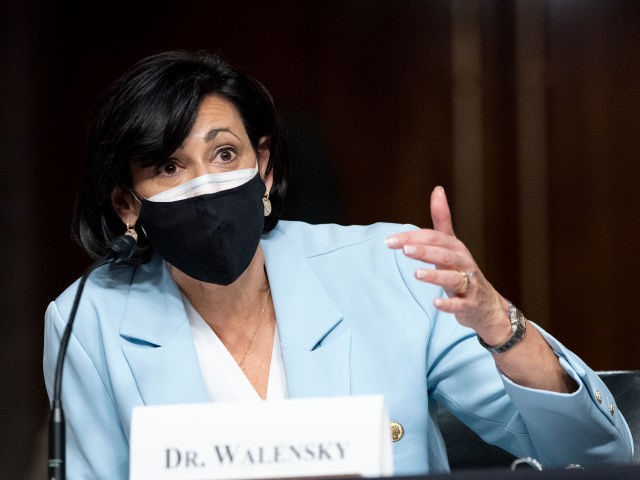The Centers for Disease Control and Prevention (CDC) upgraded its monkeypox travel notice to “Level 2” on Monday and initially recommended masking for travelers but has since retracted the guidance, according to internet archives and a report.
The CDC’s “Level 2” travel notice falls into the “alert” category and calls for travelers to use “enhanced precautions” as opposed to the lesser safeguards advised under the “watch” phase called “Level 1.”
“Wear a mask. Wearing a mask can help protect you from many diseases, including Monkeypox.” the CDC initially wrote as part of the latest guidance, internet archives show.
However, the recommendation can no longer be found on the website’s Monkeypox travel notice, though its other four advisories are still listed:
- Avoid close contact with sick people, including those with skin lesions or genital lesions.
- Avoid contact with dead or live wild animals such as small mammals including rodents (rats, squirrels) and non-human primates (monkeys, apes).
- Avoid eating or preparing meat from wild game (bushmeat) or using products derived from wild animals from Africa (creams, lotions, powders).
- Avoid contact with contaminated materials used by sick people (such as clothing, bedding, or materials used in healthcare settings) or that came into contact with infected animals.
Media reports from Monday, including from Forbes and Fox News, listed the masking as part of the agency’s recommendations.
Many took to social media to challenge the masking guidance and pointed out that the disease mainly spreads through direct physical contact with an infected individual, as the CDC itself has stated, though the agency notes it can spread through respiratory avenues under certain circumstances:
Monkeypox spreads between people primarily through direct contact with infectious sores, scabs, or body fluids. It also can be spread by respiratory secretions during prolonged, face-to-face contact. Monkeypox can spread during intimate contact between people, including during sex, as well as activities like kissing, cuddling, or touching parts of the body with monkeypox sores.
“Some cases were reported among men who have sex with men,” the CDC noted in its travel notice. “Some cases were also reported in people who live in the same household as an infected person.”
John’s Hopkins Univesity infectious disease expert Dr. Amesh Adalja previously told DailyMail:
‘When you look at the mechanics of this outbreak it is primarily transmitted through close contact and skin-to-skin contact,’ he said.
‘While monkeypox can be transmitted through respiratory droplets, that is not the main way people are getting it.
‘For example, the household attack rate [number of people who catch the virus who live with an infected person] is not very high.
The publication reported that the CDC deleted the guidance sometime before 3:00 a.m. Tuesday.

A 1997 image during an investigation into an outbreak of monkeypox, which took place in the Democratic Republic of the Congo. (via CDC)
The agency reports that cases of Monkeypox have been documented in all six inhabitable continents, with Europe having the most infections. There have been 1019 confirmed cases worldwide in 2022, with 302 instances of the disease in the United Kingdom, which is the largest of any country. Spain (198), Portugal (153), Canada (80), and Germany (65) round out the five countries with the most cases. Thirty patients in the United States have been diagnosed with Monkeypox, making it eighth in the world in terms of case count.

COMMENTS
Please let us know if you're having issues with commenting.